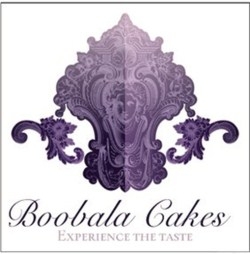
What is modeling chocolate? Not exactly what you’d expect.
Modeling chocolate is, oddly, not quite what you’d expect. When I first heard the term, I presumed it was some kind of chocolate that was shipped out in great blocks, for artists to chip away at like people used to with huge chunks of marble. Instead, to answer the question what is modeling chocolate we need to dig deeper.
Modeling chocolate is actually a paste! It’s made up of a mixture of corn syrup and different types of chocolate which are used to color the end product. Different food colorings, both natural and artificial, can also be used in modeling chocolate. It’s a really versatile ingredient, and it’s used for a lot of things thanks to its relative ease of manufacture and end use.
What is modeling chocolate used for?
Because it’s so easy to use and the cost to make it is so low, it’s used for a huge number of things in the cake decorating industry!

For example, a lot of people use it very similarly to clay, as it has a similar texture. For this reason, skilled artists can use it to make very realistic faces. It can be built up in layers, smoothed out on seams, and can hold details really well. After the face is made with modeling chocolate, it will then, typically, be applied to a fairly standard bust cake: a cake the rough shape and size of a persons head.
Modeling chocolate is actually used enough for the purpose of making faces that there are a number of different face and skull molds available. Convenient for cake makers, I’m sure, but still a little creepy!
How is modeling chocolate different from regular chocolate?
It’s different in two main ways: the makeup, and the coloration.
The makeup of standard chocolate is different from that of modeling chocolate, as standard chocolate is mixed with corn syrup to make modeling chocolate. Typically, a four to one ratio of chocolate to corn syrup is used, though this can depend a little based on the chocolate that you’re using.
The coloration of modeling chocolate also differs from the standard colors that come to mind when thinking about chocolate. The reason for this is that people often want to make realistic sculptures with the modeling chocolate, and not everything fits into the standard palette of chocolate. The food colorings that are added to modeling chocolate are nothing special, just generic colorings that are available on the open market. Typically, so that the physical structure of the modeling chocolate isn’t impaired too much, coloring gel will be used, as liquid coloring could have an adverse effect on the texture of the chocolate.
Where can you get modeling chocolate?
Modeling chocolate can be sourced from a number of different places. If you live near a larger supermarket, then you may even be able to get it there!
If not, then a specialist bakers shop may be the best bet for you. If in doubt, of course, you can always order some online.
Surprisingly, a large number of bakers, both commercial and home, make their own modeling chocolate. It’s a fairly simple recipe, and when followed faithfully, results in a consistently easy to work with modeling substance.
There’s one big secret to getting your modeling chocolate right out of a basic recipe: stop mixing at the right time!
To boil it down to its basics, a recipe for modeling chocolate will typically involve melting down your chocolate of choice, adding the corn syrup, and mixing until homogenous. The trick is to mix your ingredients well is to stop mixing when your substance is roughly the consistency of soft-serve ice cream. If you mix a little too much, the fat from the chocolate will start to separate from the rest of the mixture. In this case, step back and allow the mixture to cool, and then mix things back together until completely homogenous. If you still have some fat that’s separate from the rest of your chocolate, then smoosh it back into your mixture, and you should be fine.
What is modeling chocolate really? Modeling chocolate may, at first glance, seem like a particularly cruel and stressful mistress to be using during your bakes, but the reality couldn’t be further from the truth! It’s a simple substance once you get the hang of it, so why not start today?
To learn the difference between modeling chocolate and fondant read this article: https://www.craftsy.com/post/modeling-chocolate-vs-fondant-vs-gum-paste/#


I had a lot of misconceptions about modeling chocolate from TV baking shows, but now I have a much clearer idea of what it is! I’ll definitely have to try using modeling chocolate in my next baking session.
Okay now that explains everything, I honestly wondered how those intricate chocolate designs get done considering most chocolate’s forms will either melt or isn’t sturdy enough to keep that form. You learn things every day indeed, can’t wait to try this out myself.
Glad we could be of assistance!